‘A success’: Las Cruces baby first to undergo fetoscopic repair at Colorado hospital
Las Cruces resident Katarina Torrez was pregnant with her third child in 2023 and had no reason to think this pregnancy would be any different from the others.
At 20 weeks, she went in for a standard anatomy scan but the ultrasound technician said she could not get a good picture. They made a follow up appointment with the doctor, but Torrez, 25, said she had a feeling something was wrong.
Several appointments later, Torrez’s baby was diagnosed with spina bifida – specifically myelomeningocele spina bifida.
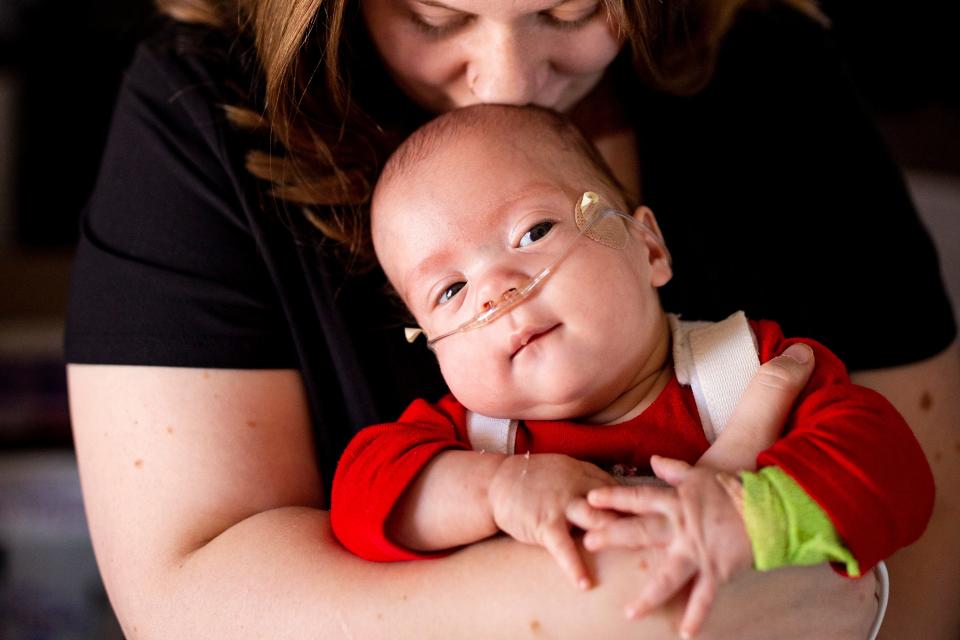
Diagnosed with a neural tube defect
Spina bifida is one type of neural tube defect (NTD) – a category of conditions that occurs when the neural tube of a developing embryo does not close properly. According to the Centers for Disease Control and Prevention, “the neural tube forms the early brain and spine” and typically closes in the early weeks of pregnancy.
Oftentimes, this portion of development occurs before a person knows they are pregnant.
There are four types of spina bifida, according to the National Institute of Neurological Disorders and Stroke. Myelomeningocele spina bifida (MMC) is the most severe form of the condition and involves part of the spinal cord or nerves being exposed in a sac through an opening in the spine. The condition is called a “snowflake condition” because every case of MMC is different.
While the opening can be treated surgically, there can still be changes in “brain structure, leg weakness, and bladder and bowel dysfunction,” NIH notes. This can mean patients develop hydrocephalus, a buildup of excess cerebrospinal fluid in the ventricles of the brain, which requires a shunt to drain, and varying ranges of mobility.
Torrez’s baby had an exposed sac on his lower back.
Fetoscopic MMC spina bifida repair in Colorado
Following the diagnosis, Torrez was referred to Chris Derderian, MD, at Children’s Hospital Colorado in Aurora for fetal surgery to repair the spinal opening.
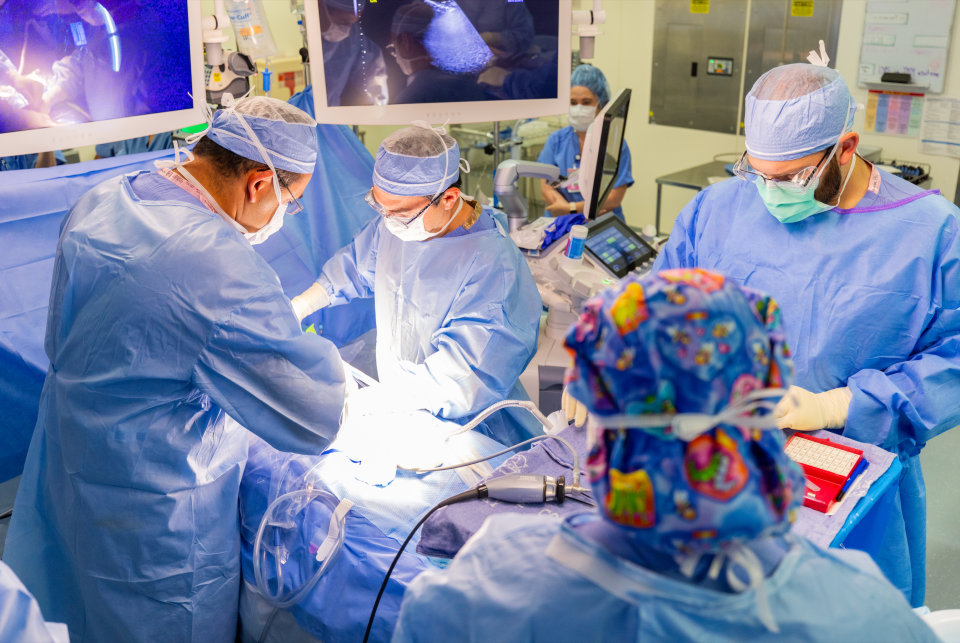
Derderian is a pediatric and fetal surgeon. He explained to Torrez and her husband, Teddy Torrez, that there were two options for repairing the MMC.
Traditionally, a surgeon would perform a surgical repair after the baby was born. However, Derderian said research released about 10 years ago proved there are benefits to performing prenatal surgical repair, or addressing the condition before the baby is born.
One option is an open repair, where an incision is made on the mother’s abdomen to expose the uterus and then a hysterotomy, or about a 10 centimeter incision on the uterus, is made to expose the fetus’ back. The surgeons repair the MMC and closes the incisions on the mother.
“That is where we've had the most robust data,” Derderian said. “One of the challenges with this is the maternal implications of it. When you make an incision of that magnitude on the uterus, they are now committed to C-sections for this pregnancy and any subsequent pregnancy that they have.”
Alternatively, surgeons have started to perform fetoscopic MMC repairs. Derderian explained that an incision is still made to expose the mother’s uterus, but instead of a hysterotomy, three millimeter-sized incisions are made to insert ports and make the repair. This surgery is about double the amount of time it takes to complete an open operation.
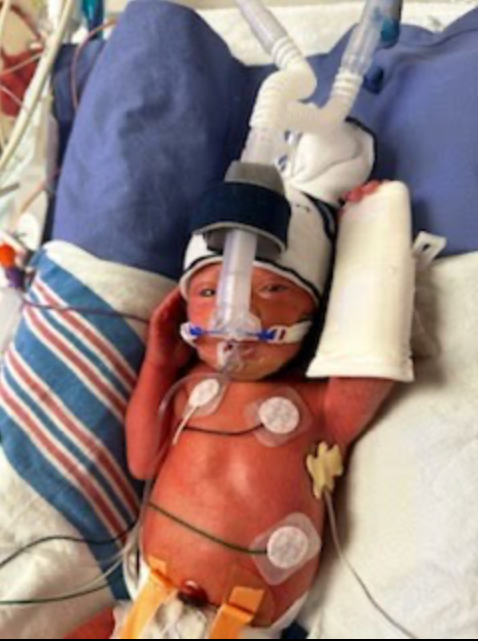
Derderian explained that research first published in 2011 in The New England Journal of Medicine suggests there is a 50% reduced need for a ventriculoperitoneal (VP) shunt to drain excess cerebrospinal fluid when MMC is repaired before birth. The VP shunt is a lifelong necessity once placed, Derderian said, and can develop complications.
He added that babies with MMC are typically placed in three categories concerning mobility.
“One being that they’re wheelchair bound, two, that they can ambulate with assist device like crutches, or three, that they can ambulate independently,” Derderian said.
The 2011 research suggests that generally, babies who undergo prenatal repair improve by one category. Research since the initial publishing is still in early stages.
He explained that while present research suggests the two prenatal surgeries have similar outcomes for the babies, the fetoscopic option allows the mother to deliver her baby vaginally. The scar from a hysterotomy incision in the open procedure means the uterus is thinned and uterine rupture is possible, which is potentially fatal to both mother and baby.
The other “downside” to fetal surgery, Derderian said, is the increased likeness that the baby will be born premature – around 34 weeks gestation.
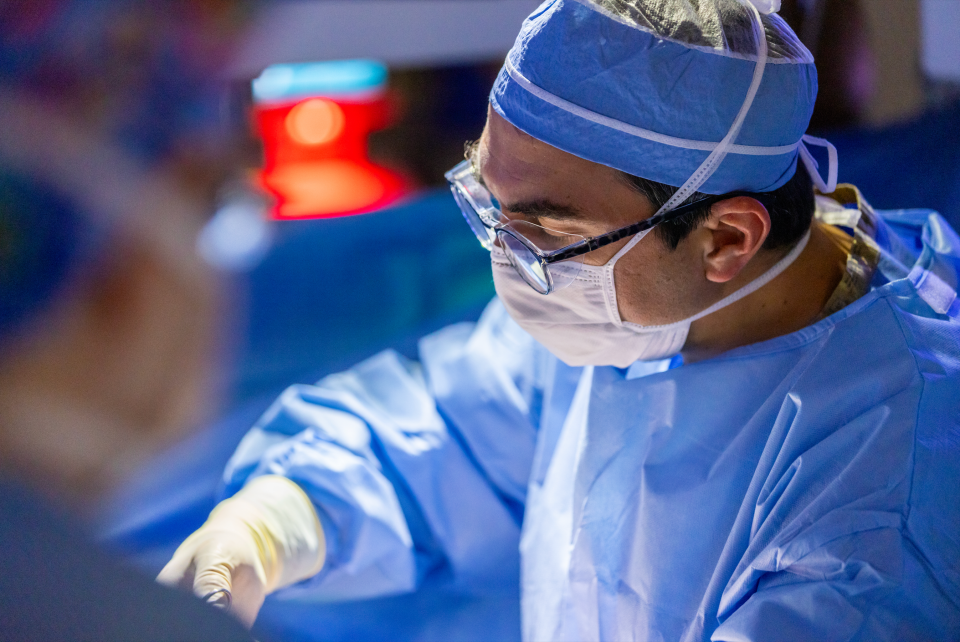
Derderian said Children’s Hospital Colorado has been cautious in implementing the procedure over the past two to three years. He and the team of doctors required in the operating room for the repair have observed various operations and learned techniques from different medical centers already offering the procedure.
He said the main necessity was ensuring the standard of care was equally high for both prenatal procedures.
The ‘perfect candidate’ for fetoscopic surgery
When Torrez was referred to Derderian, she said the doctor told her that she was a “perfect candidate” for fetoscopic surgery due to the placement of the baby’s spinal opening, its size and Torrez’s age.
However, she would be the hospital’s first patient to undergo the procedure – though a surgeon highly experienced with the surgery was also in the operating room.
“It was a lot of weighing pros and cons with everything,” she said. “Ultimately, I thought that the fetoscopic seemed less invasive and I really wanted to try and have a vaginal birth, since that's what I've had with my other kids,” Torrez said.
She was 26 weeks gestation when she underwent surgery. Torrez said she was nervous the day of surgery and remembers shaking “really bad.” The surgery itself took about six and a half hours.
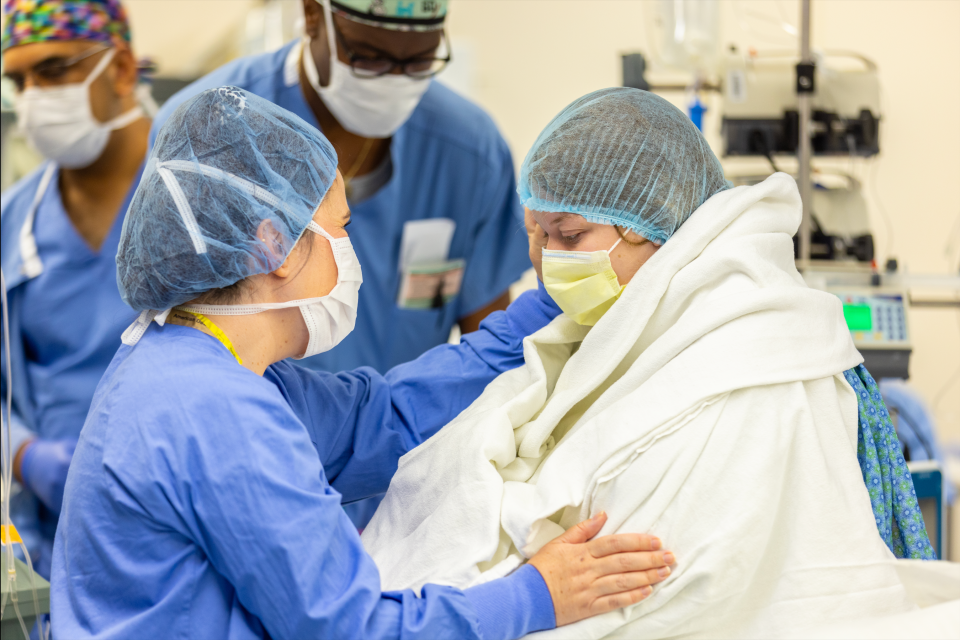
Derderian called it a success.
“I don't really remember much (from) that day. I do remember my husband slept in a chair next to me the whole night. And then the next day, you know, I felt a little bit better,” Torrez said.
Torrez stayed in the hospital for a few days before she transferred over to a Ronald McDonald House Charities location in the area. She remained in Colorado for two weeks so the doctors could follow up on her and the baby’s post-surgery progress.
Two hours into the drive back to Las Cruces, Torrez’s water broke. She said she and her husband decided to go to Albuquerque to deliver the baby.
Emilio Matthias Torrez was born via cesarean section on Sept. 17, 2023, at 30 weeks' gestation. He weighed 3 pounds, 4 ounces. His due date was Nov. 26.
Torrez said his MMC repair was not fully healed when he was born, but he cried after he was delivered, and his parents had the chance to see him before he was taken for evaluation.
Emilio stayed in the neonatal intensive care unit in Albuquerque for nearly two weeks before he was transferred back to Children’s Hospital Colorado so the doctors familiar with his condition and history could take care of him. He spent a total of 61 days in the NICU, during which his oxygen dropped several times and he turned blue, Torrez said.
Finally, mother and baby were able to return home to Las Cruces ahead of Thanksgiving. Torrez said she surprised her older sons with their return and the family was elated to be back together.

“Oh my god, they love him. My 5-year-old says, ‘that's my baby,’” Torrez said.
Outlook for baby Emilio
The fetoscopic MMC repair remains a success for Emilio, who is about four months old now. He is on a monitor and on oxygen, but continues to not require a VP shunt at this point.
Derderian said the baby is being monitored, but the need for a shunt it typically determined within the first year, and often in the first month, after birth.
Torrez said she has healed well physically from the fetoscopic surgery and C-section, though still has some pain.
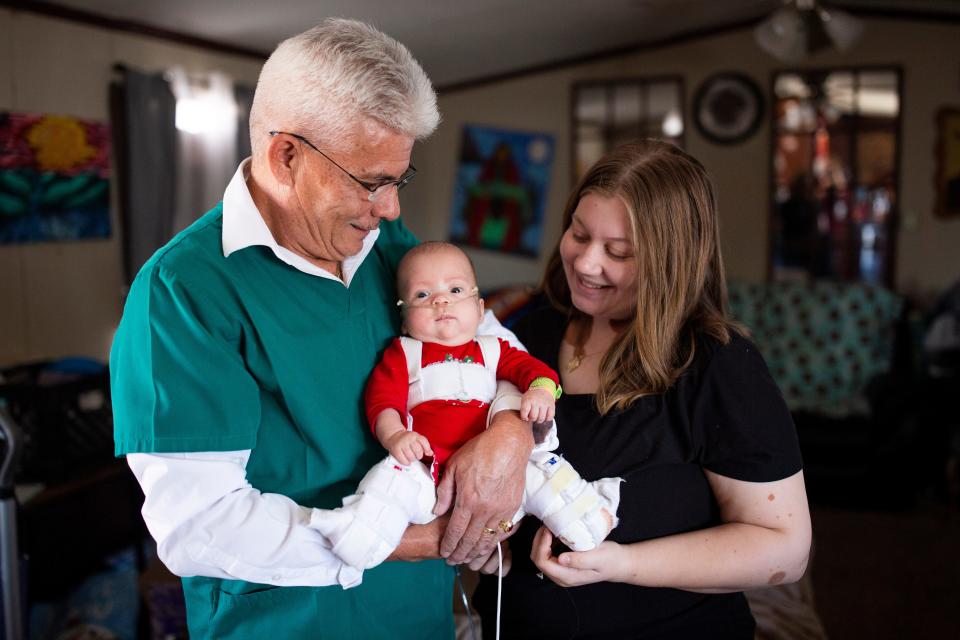
“I think I’m just more healing emotionally and mentally from everything,” she said.
Torrez added that Emilio has not shown too much movement below his knees and does not seem to have any feeling in his feet. He recently had surgery to treat clubfoot in both feet.
However, only time will tell how Emilio develops and what further surgery or assistance he might need.
Torrez said fetoscopic MMC repair is a decision every family must make for themselves and there are many factors to consider – traveling for surgery, prolonged bed rest, economic circumstances, childcare.
She said she almost decided not to have the fetoscopic surgery because there was no one to look after her older children. Luckily, her mother, who is a pediatric specialist in Sweden, was able to assist them.
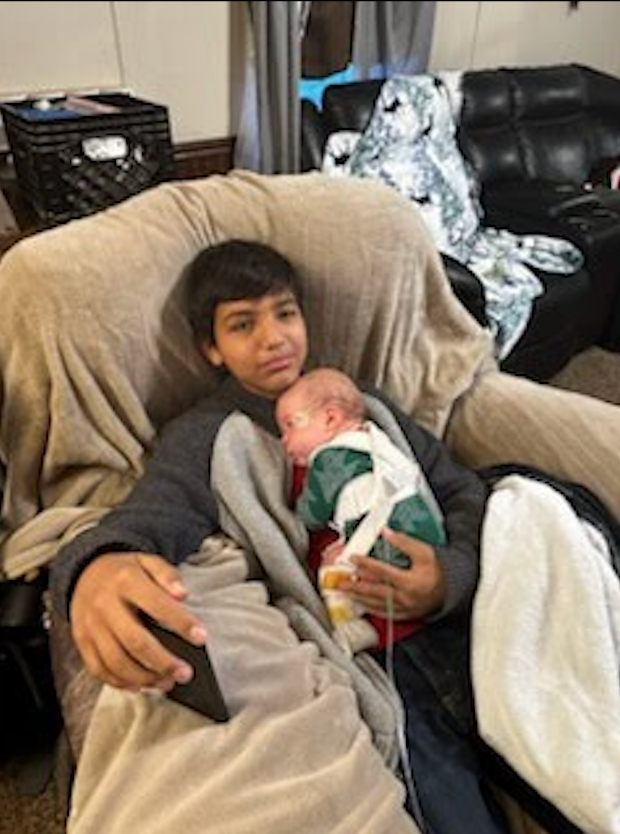
“I definitely think it's something that people should consider but not feel like if they don't qualify – because there's a lot of qualifications, too – that if they don't qualify it's the end of the world,” Torrez said.
Derderian said Children’s Hospital Colorado receives patients with MMC from a seven-state region in the western part of the state, including many from New Mexico.
“We try not to make these decisions for (patients), but really help support them in whatever avenue they want to go. Some of them even decide to terminate their pregnancies and so we support that as well. It's really a patient education opportunity for us and then let them decide,” he said.
Eight prenatal surgeries were performed at the Colorado hospital in 2022 and 20 in 2023 – a significant increase that was seen after the hospital started offering the fetoscopic procedure, Derderian said.
“It’d say on average, a busy fetal center will do between five and 10 (prenatal procedures) a year,” he said. “It’s been busy.”
Derderian added that the center has expanded the criteria while there is variability among the cases, the hospital is generally seeing babies with MMC make it to longer gestation before delivery.
Leah Romero is the trending reporter at the Las Cruces Sun-News and can be reached at 575-418-3442, LRomero@lcsun-news.com or @rromero_leah on X, formerly Twitter.
This article originally appeared on Las Cruces Sun-News: Las Cruces baby undergoes first fetoscopic repair at Colorado hospital

